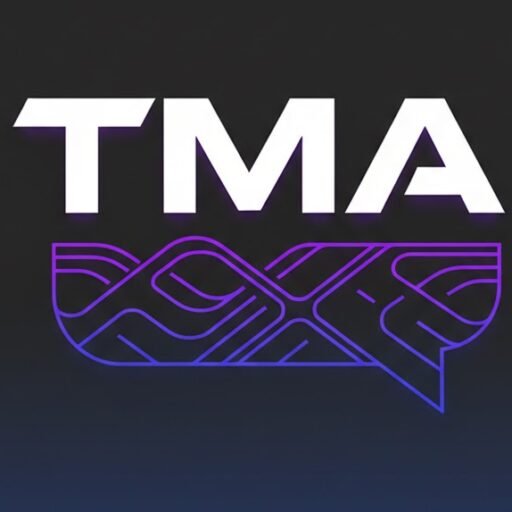Market Pulse
As November 2025 begins, stablecoins, once primarily seen as a bridge between volatile cryptocurrencies and traditional fiat, are rapidly evolving into a foundational layer of global finance. This pivotal moment is marked by a dual surge: unprecedented enterprise adoption driven by efficiency and innovation, coupled with a maturing global regulatory landscape that is finally beginning to provide much-needed clarity. Institutions and corporations worldwide are recognizing stablecoins not just as digital dollars, but as programmable money offering immense potential for treasury management, cross-border payments, and supply chain finance, signaling a profound shift in the utility and perception of these digital assets.
The Maturing Global Regulatory Landscape
The past year has been instrumental in shaping the legal and operational frameworks for stablecoins across major economic blocs. The European Union’s Markets in Crypto-Assets (MiCA) regulation, now largely in effect, has set a precedent, categorizing and imposing strict requirements on stablecoin issuers operating within the bloc. This has forced clarity and compliance, creating a more predictable environment for businesses.
- European Union: MiCA’s robust framework for asset-referenced tokens (ARTs) and e-money tokens (EMTs) has solidified operational guidelines.
- United States: While comprehensive federal legislation remains elusive, state-level initiatives and clearer guidance from agencies like the OCC and Treasury are creating de facto pathways for stablecoin issuance and usage, particularly for regulated financial institutions.
- Asia-Pacific: Countries like Japan and Singapore have continued to refine their own stablecoin-specific regulations, often focusing on consumer protection and financial stability, fostering a climate where regulated stablecoin products can thrive.
This mosaic of global regulation, while still fragmented, increasingly points towards a future where major stablecoins operate under clear legal mandates, enhancing trust and reducing systemic risk concerns for mainstream adoption.
Enterprise Adoption Beyond Payments
Beyond their initial use case in crypto trading, stablecoins are now finding sophisticated applications within traditional enterprise settings. Corporations are leveraging their inherent speed, low cost, and 24/7 availability to optimize a range of financial operations:
- Treasury Management: Large corporations are experimenting with stablecoins for holding working capital, reducing foreign exchange volatility for international subsidiaries, and earning yield in permissioned DeFi protocols.
- Cross-Border Trade and Settlements: For businesses engaged in global commerce, stablecoins offer a faster, cheaper alternative to traditional correspondent banking, cutting settlement times from days to minutes and significantly reducing transaction fees.
- Supply Chain Finance: Programmable stablecoins are being integrated into supply chain platforms to enable automated payments upon delivery or milestone completion, enhancing efficiency and transparency for all participants.
- Payroll and Gig Economy: Companies are exploring stablecoin payouts for international contractors and gig workers, offering instant settlements and reducing currency conversion complexities.
This expanding utility underscores stablecoins’ potential to fundamentally reshape how global businesses manage their finances and interact across borders.
Technological Innovations Driving Utility
The underlying technology supporting stablecoins continues to evolve, enhancing their appeal and expanding their potential. Innovations are addressing key areas such as privacy, interoperability, and programmability.
- Privacy-Enhanced Stablecoins: Research and development in privacy-preserving technologies like zero-knowledge proofs are leading to stablecoin variants that offer transactional confidentiality while maintaining regulatory compliance.
- Cross-Chain Interoperability: Solutions enabling seamless transfer and use of stablecoins across different blockchain networks (Layer 1s and Layer 2s) are improving liquidity and reducing friction for users and businesses.
- Programmable Financial Primitives: The ability to embed logic directly into stablecoins allows for sophisticated financial instruments, escrow services, and automated payment flows, unlocking new possibilities in structured finance and digital commerce.
These advancements are critical in building a robust, versatile, and secure digital financial infrastructure capable of supporting the demands of a global economy.
Challenges and Future Outlook
Despite significant progress, challenges persist. Interoperability across diverse regulatory regimes and blockchain networks remains a hurdle. Concerns over systemic risk, particularly from large, unregulated stablecoin issuers, continue to be a focus for policymakers. Furthermore, the burgeoning interest in Central Bank Digital Currencies (CBDCs) presents a potential competitive landscape, though many foresee stablecoins and CBDCs co-existing, serving different niches within the broader digital economy.
Conclusion
As November 2025 progresses, stablecoins stand at a critical juncture, poised for deeper integration into the global financial system. The convergence of clearer regulatory frameworks and accelerating enterprise adoption is transforming them from niche crypto assets into indispensable tools for modern finance. While the path ahead holds its own complexities, the trajectory clearly points towards stablecoins playing an increasingly pivotal role in a more efficient, transparent, and digitally-native global economy.
Pros (Bullish Points)
- Improved regulatory clarity fostering wider institutional and enterprise trust.
- Increased adoption by businesses leading to greater utility and volume.
Cons (Bearish Points)
- Competition from potential central bank digital currencies (CBDCs) could limit growth.
- Persistent concerns over systemic risk and full auditability may deter some traditional players.
Frequently Asked Questions
What are the primary drivers of stablecoin adoption in late 2025?
The primary drivers are increasing regulatory certainty, demand for efficient cross-border transactions, and their utility in enterprise treasury management and DeFi.
How has global regulation impacted stablecoins this year?
Global regulation, particularly the implementation of frameworks like MiCA in the EU, has provided much-needed clarity, reducing uncertainty and paving the way for broader institutional integration.
Are stablecoins competing with CBDCs?
Yes, stablecoins and CBDCs represent different approaches to digital currency, and their long-term roles and competitive dynamics are still evolving, with potential for both competition and co-existence.






